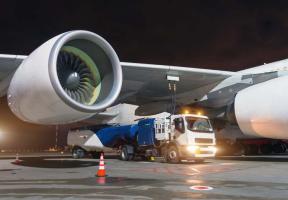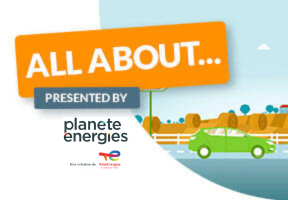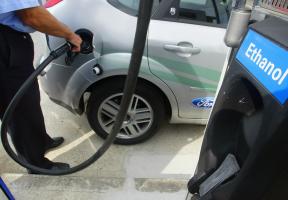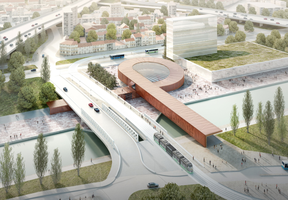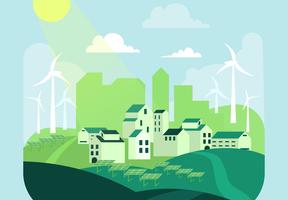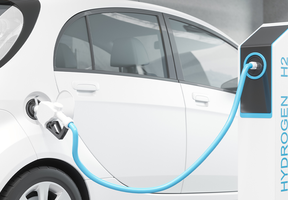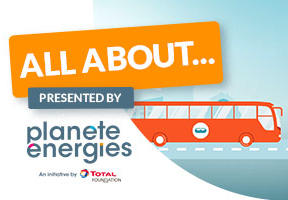Urban Mobility: Transportation Goes Digital to Boost Efficiency
10 min read
Making mobility truly sustainable is no longer just a challenge for automakers; it also depends on how users respond to emerging mobility services and the way public space is organized, especially in so-called “smart” cities. Underpinning all these changes is digital technology and its ability to manage ever-increasingly present data.
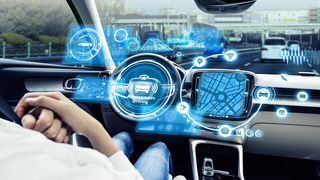
© getty/ metamorworks
The goal of sustainable mobility is to increase efficiency (and thereby reduce CO2 and other harmful emissions), improve safety and enhance the quality of life in the large metropolitan areas that will be home to more and more people over the next 30 years. It concerns all forms of land, sea and air transport, for both passengers and freight.
In the following glossary, we will explore some of the new concepts emerging in the critically important automotive industry, with a focus on three areas: the vehicles themselves, new uses and practices, and the organization of public space.
Auto manufacturers: digital technology in the automotive sector
Driver assistance systems
Electronic driver assistance technologies, which are increasingly based on artificial intelligence, include such systems as lane departure warnings, intelligent speed adaptation, automatic parking, HUD and other displays that replace rear-view mirrors, cruise control, GPS and automated route planning. The latest systems can even create a heated or air-conditioned “comfort bubble” for each passenger. To support these systems, cars are equipped with a wide array of radars, sensors, cameras, scanners and microprocessors.
These devices are a lot more than just gadgets. Eliminating rear-view mirrors and rear windows, for example, will make cars more aerodynamic, thereby improving their fuel performance. A good HVAC system can also lower fuel consumption, especially in electric vehicles that cannot reuse the heat generated by an internal combustion engine.
Autonomous or semi-autonomous cars
Fully or semi-autonomous vehicles are equipped with a variety of automated systems that further extend existing driver assistance capabilities. These self-driving technologies are being introduced by automakers for use in a successively wider range of situations, starting with traffic jams, then along selected strips of motorway and lastly in city centers, all with the possibility of the driver taking the wheel at any time if necessary. Autonomous vehicles are already being tested on closed circuits or sites, such as airports, amusement parks, logistics hubs and construction worksites. These systems demand critical expertise in digital mapping, which helps to guide the vehicle with centimeter-level precise point positioning of every object in a given space.
The expected benefits include greater safety, smoother traffic flows and fewer traffic jams, with a corresponding reduction in fuel consumption.
Users: new uses and practices
Carpooling enables two or more people going to the same destination to share a ride in the same car, whether for long-distance travel (with BlaBlaCar, for example) or shorter commutes. Users generally book a ride online or through a mobile application.
Car sharing systems allow drivers to use a vehicle for a short period of time. Sometimes these systems are run by associations, whose members purchase and manage the cars collectively, but the most common arrangement is for companies to offer a fleet of vehicles that can be picked up and dropped off at dedicated locations. Other systems, described as free floating, use a mobile booking application and onboard management software to allow users to pick up and drop off their vehicle anywhere they choose. Naturally, this can be applied to other modes of transport, such as motor scooters, bicycles and kick scooters.
The sharing economy is a concept based on the ability of individuals and businesses to interact directly using new networking technologies, which has spurred the emergence of on‑demand ride hailing services. As a result, vehicle ownership is being replaced by vehicle usership, meaning that an automaker’s performance will no longer be measured just by the number of vehicles sold, but also by the total mileage of shared auto-based transport. According to a report by financial services firm Morgan Stanley1, shared cars and on-demand ride-hailing services accounted for 4% of global kilometers traveled in 2015, with the figure forecast to rise to 26% by 2030.
Network operators: organizing public space
Urban data management concerns the processing of all the vast amounts of data collected by cities, which can be used to manage and predict traffic flows, synchronize traffic lights and organize public transport. When shared with users, this “big data” lets people calculate itineraries and access an increasing number of services. For example, a project is currently exploring the possibility of connecting and synchronizing cars and traffic lights, so that when a light turns green, every car would start at the same time, like a train, and keep traffic moving smoothly. Singapore has implemented a global satellite navigation system that is improving the flow of trains, buses and passenger cars, all of which will be equipped with receiving devices. This is what is meant by the term “smart cities”2.
Intermodal transportation involves the use of two or more modes of transportation to get from one place to another. Data management systems make it easier to coordinate timetables and switch from one mode to the next, for example, by linking an overground circular tramway network with a subway system’s spoke stations. In many cities, an application can tell you where to get on the train in order to be best positioned to exit or transfer when you get off. Today’s mobility passes enable users to switch seamlessly from one mode to another, by allowing them to pay different operators with the same card or mobile app.
Demand-responsive transit (DRT) is a form of public transportation that does not necessarily run on set routes or schedules. Users book a pick-up via an automated system, which finds a minivan corresponding to their specific needs. Also known as van-pooling or bus-pooling, DRT is well suited for seniors or people who do not own a car.
The last kilometer refers to all the operations involved in the last stage of delivering people, goods or services to their destination. Last kilometer issues have become more acute with the very fast growth in online retailing, which delivers parcels directly to the buyer’s doorstep. Costs associated with this last leg are often high. In addition to parcel pickup at local retailers, bicycle and tricycle cargo delivery has again become popular in many European cities. Drones are also being tested as a means for delivering packages in rural areas.
Sources:

